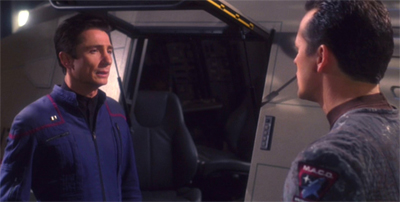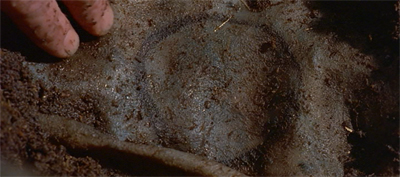Indiana Jones and the Kingdom of the Crystal Skull is a movie with very real and very tangible problems.
Part of the problem is one of simple aesthetics. The original trilogy were products of a very particular moment in the history of American cinema, spanning the eighties. Raiders of the Lost Ark was very much a rollercoaster of a movie, a showcase for practical effects and impressive stunt work. Indiana Jones and the Temple of Doom was built around impressive physical sets, model work and location work. Even Indiana Jones and the Last Crusade took a great deal of pride in how tactile this world felt.

Crystal clear.
In contrast, Indiana Jones and the Kingdom of the Crystal Skull was a product of a transitional decade for Hollywood. It is no coincidence that the film opened in the same summer as blockbusters like Iron Man and The Dark Knight, which heralded a new future for crowdpleasing spectacle. While The Dark Knight made a conscious effort to ground its storytelling in practical effects, Iron Man signaled that the digital effects revolution was going to be the cornerstone of the superhero genre.
As such, Indiana Jones and the Kingdom of the Crystal Skull feels like a deliberate and conscious step into the uncanny valley. Many of the movie’s most decried action sequences are driven by green screen and computer-generated special effects, standing in start contrast to the weight and mass that defined the earlier set pieces. It’s unsettling and uncomfortable. The chase sequence in the Amazon is perhaps the most egregious example, but this detachment from reality is obvious from the early scenes inside the warehouse, as pixels guide our hero and his captors to their destination.

Blowing the roof off.
Indiana Jones and the Kingdom of the Crystal Skull exists in another uncanny space, most obviously through the introduction of the character of Mutt Williams. Part of this problem is undoubtedly Shia LeBeouf himself, who has been candid about his work on the film to the point of alienating director Steven Spielberg. Much like it’s easier to recognise the “pre-sequel” of Indiana Jones and the Temple of Doom as a prequel with the benefit of hindsight, it’s easier now to see Indiana Jones and the Kingdom of the Crystal Skull as a rough draft of a “legacyquel”, like Creed or Star Wars: Episode VII – The Force Awakens.
Of course, Indiana Jones and the Kingdom of the Crystal Skull is too clumsy to really work in that way. The film’s closing moments dare to tease the idea of Mutt Williams succeeding Indiana Jones, the wind blowing Jones’ iconic hat into Williams’ clutches. However, Indiana Jones and the Kingdom of the Crystal Skull lacks the courage of its commitment. Jones snatches the hat away at the last minute, prefiguring the way in which Star Wars: Episode IX – The Rise of Skywalker would retreat from the idea of passing Star Wars to a new generation.

It’s not the years, it’s the mileage.
There are other ways in which Indiana Jones and the Kingdom of the Crystal Skull feels like it is caught between two eras. The film’s structure arguably suffers from the production team’s famed attempts to preserve the secrecy of the plot, which even extended to a sting operation and a high-profile lawsuit. The publicity around the film reportedly considered keeping Karen Allen’s return a secret, and the film’s structure conceals the presence of Marion Ravenwood for an hour. It’s a choice that muddies the film’s handling of its themes, denying it the clarity of how Indiana Jones and the Last Crusade handled Henry Jones.
Still, accepting these issues as problems, there is a lot of interesting stuff happening beneath the surface of Indiana Jones and the Kingdom of the Crystal Skull. In particular, Indiana Jones and the Kingdom of the Crystal Skull feels like a very sincere and genuine effort on the part of everybody involved to figure out some grand unified theory of Indiana Jones, separated from the original three films by decades. What does it mean to look back on the trilogy? How has the world changed? How would the character wrap it all up?

It was admittedly a bit of a wash…
Continue reading →
Filed under: On Second Thought | Tagged: aliens, ambiguity, barriers, blur, boundaries, Cold War, dichotomy, film, george lucas, icon, indiana jones, Indiana Jones and the Kingdom of the Crystal Skull, indy, interdimensional beings, Movie, nuance, pulp, steven spielberg, war on terror | 6 Comments »








































